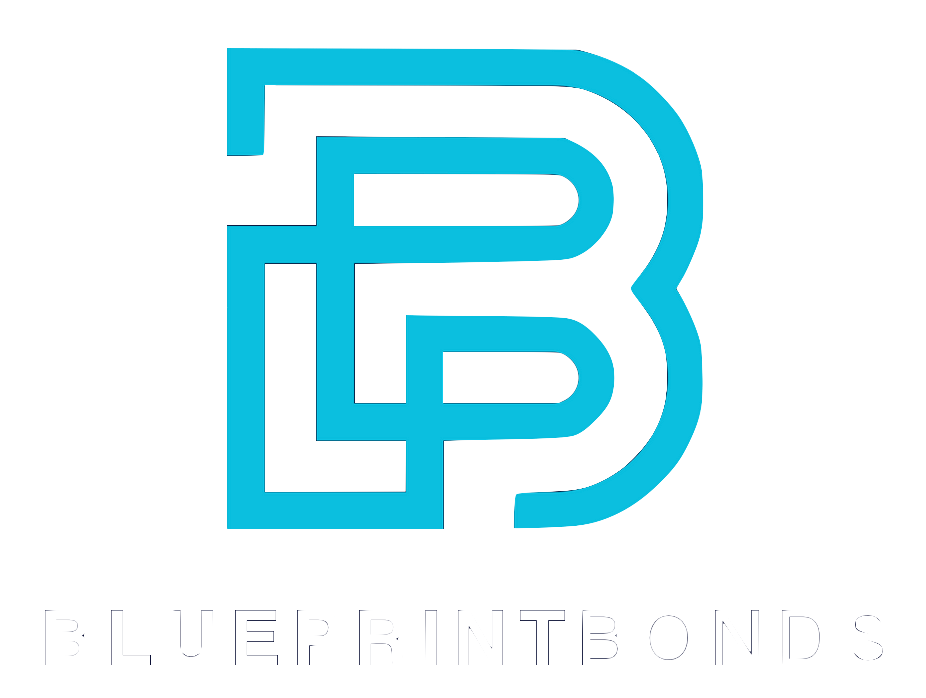The Employee Retirement Income Security Act (ERISA) was enacted in 1974 to protect the interests of employee benefit plan participants and their beneficiaries. One of the essential components of ERISA is the requirement for certain plans to obtain an ERISA bond. This article delves into the details of ERISA bonds, their purpose, requirements, and implications for employers and plan sponsors.
What is an ERISA Bond?
An ERISA bond is a type of fidelity bond that protects employee benefit plans from losses caused by fraudulent or dishonest acts of individuals who handle plan funds. This includes anyone who has access to the plan's assets, such as plan administrators, trustees, and other fiduciaries. The bond serves as a safeguard, ensuring that the plan has financial recourse in the event of theft or embezzlement. The requirement for an ERISA bond is mandated under the Employee Retirement Income Security Act (ERISA), which was enacted to protect the interests of employee benefit plan participants and their beneficiaries.
Purpose of an ERISA Bond
The primary purpose of an ERISA bond is to protect the assets of employee benefit plans. By requiring a bond, ERISA aims to mitigate the risk of loss due to dishonest actions by those who manage or control the plan's assets. This protective measure not only helps to secure the funds of participants but also promotes trust in the management of retirement and health benefit plans. In essence, the bond acts as a financial safety net, ensuring that if a fiduciary misappropriates funds, the plan can recover some or all of the lost assets through the bond's coverage. This is particularly important in an era where financial mismanagement can have devastating effects on employees' futures.
Who Needs an ERISA Bond?
Not all employee benefit plans are required to obtain an ERISA bond. Generally, plans that handle plan assets or have individuals who manage these assets must secure a bond. This includes defined benefit plans, defined contribution plans, and health and welfare plans. However, plans that are fully insured or do not have individuals with access to plan assets may be exempt from this requirement. Additionally, it's important for employers to understand the specific bonding requirements as they can vary based on the size of the plan and the number of individuals who handle the assets. For instance, larger plans may have higher bonding limits to adequately cover potential losses, while smaller plans might have different thresholds. Employers must also ensure that the bond is maintained throughout the life of the plan, as lapses in coverage could expose participants to unnecessary risk.

Requirements for ERISA Bonds
ERISA outlines specific requirements for the bonds, including the amount of coverage and the individuals who must be bonded. Understanding these requirements is crucial for compliance and ensuring the protection of plan assets. Failure to adhere to these regulations can result in significant penalties and jeopardize the financial security of the retirement plans, making it imperative for employers and plan sponsors to stay informed about the latest ERISA guidelines.
Bond Amount
The minimum bond amount is typically set at 10% of the plan's assets, with a minimum coverage of $1,000. For example, if a plan has $500,000 in assets, the bond must be at least $50,000. However, if the plan has assets exceeding $1,000,000, the bond amount should be calculated based on the 10% rule, ensuring adequate coverage for potential losses. It's important to note that the bond amount is not static; as the plan's assets grow or shrink, the bond should be adjusted accordingly to maintain compliance and protect against potential fiduciary breaches.
Who Must Be Bonded?
All individuals who handle or have access to plan assets must be bonded. This includes plan administrators, trustees, and anyone else who has a fiduciary responsibility or access to the funds. It's essential to ensure that all relevant individuals are covered under the bond to comply with ERISA regulations. Additionally, organizations should conduct regular audits and reviews of their personnel to confirm that all individuals who meet these criteria are indeed bonded, as lapses in coverage can expose the plan to unnecessary risks and liabilities.
Bond Issuer Requirements
ERISA bonds must be issued by a company that is approved by the U.S. Department of the Treasury. This ensures that the bond meets federal standards and provides adequate protection for the plan. Employers should verify that their chosen bonding company is on the Treasury's list of approved issuers to ensure compliance. Furthermore, it is advisable for employers to evaluate the reputation and financial stability of the bonding company, as this can impact the reliability of the bond in the event of a claim. Engaging with a knowledgeable insurance broker can also help organizations navigate the complexities of selecting the right bond issuer, ensuring they make informed decisions that align with their specific needs and regulatory requirements.
How to Obtain an ERISA Bond
Obtaining an ERISA bond involves several steps, from assessing the need for a bond to selecting an appropriate bonding company. Understanding this process can help employers navigate the requirements efficiently.
Assessing the Need for a Bond
The first step in obtaining an ERISA bond is to assess whether the plan requires one. Employers should review the plan's structure, the individuals involved in managing the assets, and the type of benefits offered. Consulting with a legal or financial advisor can provide clarity on whether bonding is necessary. It's also important to consider the potential risks associated with the management of plan assets, as a bond serves as a safeguard against fraud or dishonesty by those handling the funds. By thoroughly evaluating these factors, employers can make informed decisions that protect both the plan and its participants.
Selecting a Bonding Company
Once the need for a bond is established, the next step is to select a bonding company. Employers should look for companies that specialize in ERISA bonds and are listed as approved by the U.S. Department of the Treasury. It's advisable to compare quotes and coverage options from multiple providers to find the best fit for the plan's needs. Additionally, researching the reputation and reliability of the bonding companies can provide insights into their customer service and claims handling processes. Reading reviews and seeking recommendations from other employers can also aid in making a well-informed choice that aligns with the specific requirements of the retirement plan.
Completing the Application Process
After selecting a bonding company, the employer must complete the application process. This typically involves providing information about the plan, its assets, and the individuals who will be bonded. The bonding company will assess the application and determine the appropriate coverage and premium based on the information provided. Employers should be prepared to disclose any relevant financial history or past incidents that may affect the bonding decision. This transparency can facilitate a smoother application process and help in securing a bond that adequately covers the plan's needs.
Furthermore, it is crucial for employers to understand the terms and conditions of the bond they are applying for. Each bonding company may have different stipulations regarding coverage limits, exclusions, and renewal processes. Employers should carefully review these details to ensure they are fully aware of their obligations and the protections offered by the bond. Engaging in discussions with the bonding company can also clarify any uncertainties and help employers feel more confident in their decision-making as they navigate the complexities of ERISA compliance.
Cost of ERISA Bonds
The cost of an ERISA bond can vary based on several factors, including the amount of coverage required, the bonding company's rates, and the risk associated with the plan. Understanding these cost factors can help employers budget accordingly.
Factors Influencing Bond Costs
Several factors can influence the cost of an ERISA bond. The primary determinant is the bond amount; higher coverage typically results in higher premiums. Additionally, the bonding company's underwriting criteria, including the risk profile of the individuals being bonded and the overall financial health of the plan, can affect pricing. Employers should consider these factors when budgeting for bond costs. For instance, if a plan has a history of claims or irregularities, it may be deemed higher risk, leading to increased premiums. Furthermore, the type of plan—whether it’s a defined benefit or defined contribution plan—can also play a role in determining the bond's cost, as each type presents different levels of risk and complexity.
Average Premiums
On average, premiums for ERISA bonds can range from a few hundred dollars to several thousand dollars, depending on the plan's asset size and the coverage amount. Employers should obtain quotes from multiple bonding companies to ensure they receive competitive pricing. It's essential to balance cost with the level of protection provided by the bond. Additionally, some bonding companies may offer discounts for long-term clients or for organizations that implement strong internal controls, which can help mitigate risks. Employers might also consider the potential costs of not having adequate bonding in place, as the financial implications of fraud or mismanagement can far exceed the cost of the bond itself. Thus, investing in a comprehensive ERISA bond is not just a regulatory requirement but also a crucial step in safeguarding employee benefits and maintaining trust within the organization.

Compliance and Reporting Requirements
Once an ERISA bond is obtained, employers must adhere to ongoing compliance and reporting requirements. Understanding these obligations is crucial for maintaining compliance with ERISA regulations. The importance of these requirements cannot be overstated, as they serve to protect both the plan participants and the integrity of the employee benefit plans themselves. Employers should stay informed about any changes in regulations that could affect their compliance status, as the landscape of employee benefits is constantly evolving.
Annual Reporting
Employers must report the existence of the ERISA bond on the Form 5500, an annual report required for employee benefit plans. This form provides the Department of Labor with essential information about the plan's financial status, including details about the bond coverage. Failing to report the bond can result in penalties and compliance issues. Additionally, the Form 5500 requires employers to disclose information about the plan's operations, investments, and any fees associated with the management of the plan. Accurate and timely reporting not only helps avoid penalties but also builds trust with employees, demonstrating that the employer is committed to transparency and responsible management of their retirement assets.
Maintaining Adequate Coverage
Employers must regularly review the bond coverage to ensure it remains adequate as the plan's assets grow or change. If the plan's asset value increases, the bond amount may need to be adjusted to meet the 10% requirement. Regular assessments can help prevent lapses in coverage and ensure ongoing compliance. It is advisable for employers to establish a schedule for these reviews, perhaps annually or biannually, and to document the process thoroughly. This not only aids in compliance but also serves as a safeguard against potential claims of mismanagement. Furthermore, employers should consider consulting with financial advisors or legal experts who specialize in ERISA regulations to ensure that their bond coverage aligns with best practices and the specific needs of their employee benefit plans. By taking proactive steps, employers can mitigate risks and enhance the overall security of their employee benefit offerings.
Consequences of Non-Compliance
Failing to obtain or maintain an ERISA bond can lead to significant consequences for employers and plan sponsors. Understanding these potential repercussions is crucial for ensuring compliance and protecting plan assets.
Penalties and Fines
The Department of Labor can impose penalties and fines on employers who fail to comply with ERISA bonding requirements. These penalties can be substantial, leading to financial strain on the organization. Additionally, non-compliance can result in increased scrutiny from regulators, potentially leading to further legal issues. Employers may also face civil lawsuits from plan participants who suffer losses due to the lack of proper bonding, further complicating the financial landscape for the organization.
Increased Risk of Loss
Without an ERISA bond, employee benefit plans are at a higher risk of loss due to fraudulent or dishonest actions by individuals with access to plan assets. In the event of theft or embezzlement, the plan may have no financial recourse to recover lost funds, putting participants' retirement savings at risk. This lack of protection can erode employee trust in the organization, leading to decreased morale and potential turnover as employees seek more secure employment options. Furthermore, the reputational damage that can arise from such incidents may deter prospective employees and clients, impacting the overall success and sustainability of the business.
Legal Implications
In addition to financial penalties, non-compliance with ERISA bonding requirements can expose employers to various legal implications. For instance, if a plan sponsor is found to have neglected their bonding obligations, they may face litigation from disgruntled employees or beneficiaries seeking restitution for losses incurred. Such legal battles can be lengthy and costly, diverting valuable resources away from the core operations of the business. Moreover, the potential for class-action lawsuits increases as more participants become aware of the risks associated with inadequate bonding, leading to a cascade of legal challenges that can overwhelm even well-established organizations.
Conclusion
ERISA bonds play a critical role in safeguarding employee benefit plans from potential losses caused by dishonest acts. Understanding the requirements, costs, and compliance obligations associated with ERISA bonds is essential for employers and plan sponsors. By securing an appropriate bond, organizations can protect their employees' retirement savings and ensure compliance with federal regulations.
As the landscape of employee benefits continues to evolve, staying informed about ERISA bonding requirements and best practices is vital. Employers should regularly review their bonding needs and consult with legal or financial advisors to ensure they remain compliant and adequately protected.
Article By: Ryan Spalding
Licensed Insurance Agent & Bond Specialist
Contact Us

